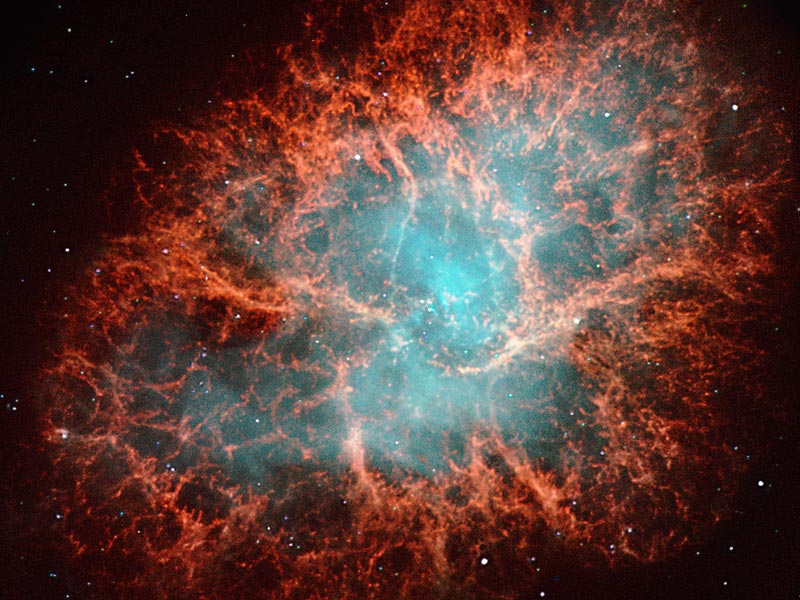
|
Explanation: This is the mess that is left when a star explodes. The Crab Nebula, the result of a supernova seen in 1054 AD, is filled with mysterious filaments. The filaments are not only tremendously complex, but appear to have less mass than expelled in the original supernova and a higher speed than expected from a free explosion. The above image, taken by the Nordic Optical Telescope (NOT), is in three colors chosen for scientific interest. The Crab Nebula spans about 10 light-years. In the nebula's very center lies a pulsar: a neutron star as massive as the Sun but with only the size of a small town. The Crab Pulsar rotates about 30 times each second.
|
January February March April May June July August September October November December |
| ||||||||||||||||||||||||||||||||||||||||||||||||
NASA Web Site Statements, Warnings, and Disclaimers
NASA Official: Jay Norris. Specific rights apply.
A service of: LHEA at NASA / GSFC
& Michigan Tech. U.
Based on Astronomy Picture
Of the Day
Publications with keywords: Crab Nebula - M 1
Publications with words: Crab Nebula - M 1
See also:
- APOD: 2025 August 24 Á The Spinning Pulsar of the Crab Nebula
- M1: The Incredible Expanding Crab
- APOD: 2024 July 23 Á The Crab Nebula from Visible to X Ray
- M1: The Crab Nebula
- APOD: 2023 March 20 Á M1: The Expanding Crab Nebula
- APOD: 2023 January 15 Á M1: The Crab Nebula from Hubble
- The Spinning Pulsar of the Crab Nebula
